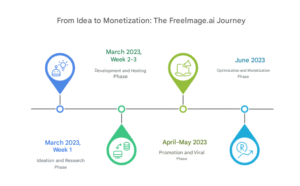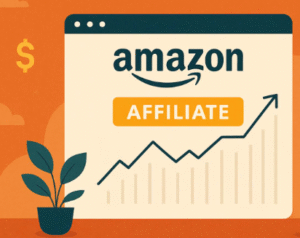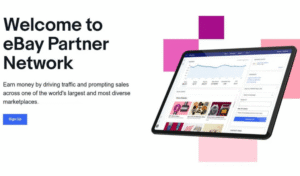
Affiliate Marketing for Beginners: Your Guide to Earning Online
In the vast landscape of online income opportunities, Affiliate Marketing stands out as one of the most accessible and rewarding for newcomers. If you’re looking to leverage your online presence, build a sustainable income stream, and drive traffic to your website through SEO, understanding affiliate marketing is your first crucial step.
This guide will break down what affiliate marketing is, how it works, and provide clear, actionable steps for beginners to get started.
What is Affiliate Marketing?
At its core, affiliate marketing is a performance-based marketing strategy where a business (the merchant) rewards one or more affiliates for each visitor or customer brought by the affiliate’s own marketing efforts.
Think of it as being a salesperson for someone else’s product or service. Instead of earning a salary, you earn a commission every time someone buys through your unique referral link.
Key Players:
- The Merchant (or Advertiser/Brand): The company that sells the product or service.
- The Affiliate (or Publisher): You! The individual or company that promotes the merchant’s products.
- The Consumer: The customer who buys the product after being referred by the affiliate.
- The Affiliate Network (Optional but common): A platform that acts as an intermediary, connecting merchants with affiliates and handling tracking, reporting, and payments (e.g., ShareASale, CJ Affiliate, Amazon Associates).
How Does Affiliate Marketing Work? (The Simple Process)
- You Join an Affiliate Program: You sign up for an affiliate program offered by a merchant or through an affiliate network.
- You Get a Unique Affiliate Link: Once approved, you receive a special tracking link. This link contains a unique ID that identifies you as the referrer.
- You Promote the Product: You integrate this link into your content (blog posts, social media, videos, emails) to promote the product.
- A Customer Clicks Your Link: A user clicks on your affiliate link, and a “cookie” is placed on their browser. This cookie tracks their activity, typically for a set period (e.g., 30, 60, 90 days).
- The Customer Makes a Purchase: If the customer buys the product within the cookie’s lifespan, the sale is attributed to you.
- You Earn a Commission: The merchant (or network) pays you a pre-agreed commission for that sale.
Why is Affiliate Marketing Great for Beginners?
- Low Barrier to Entry: You don’t need to create your own product or service. You just need to focus on marketing.
- No Inventory or Shipping: You don’t handle any physical products, inventory management, or customer service. The merchant takes care of all that.
- Flexibility: You can work from anywhere, set your own hours, and promote products you genuinely believe in.
- Scalability: Once your marketing efforts gain traction, you can scale your income by promoting more products or expanding your audience.
- Passive Income Potential: While it requires initial effort, well-optimized content with affiliate links can continue to generate income long after it’s published.
Getting Started with Affiliate Marketing: A Beginner’s Guide
Step 1: Choose Your Niche Wisely
This is perhaps the most critical step. Your niche should be:
- Something you’re passionate about or knowledgeable in: This makes content creation enjoyable and authentic.
- Profitable: There should be products or services within that niche that people are willing to buy, and good affiliate programs available.
- Not overly saturated: While popular niches can be profitable, extremely competitive ones might be harder for a beginner to break into.
- Examples: Personal finance, fitness, tech gadgets, pet care, sustainable living, gaming, cooking, travel.
Step 2: Build Your Platform (Your “Home Base”)
You need a place to publish your content and house your affiliate links.
- Website/Blog (Highly Recommended for SEO Traffic): This gives you full control, allows for deep, valuable content, and is ideal for SEO. WordPress is an excellent choice for building a blog.
- Social Media: Platforms like Instagram, YouTube, TikTok, or Facebook can be powerful, especially if you have an engaged audience.
- Email List: A long-term asset for direct communication with your audience.
Step 3: Find Relevant Affiliate Programs
Once you have a niche and a platform, it’s time to find products to promote.
- Affiliate Networks: Join major networks like:
- Amazon Associates: Great for beginners, wide range of physical products.
- ShareASale: Many smaller, niche-specific brands.
- CJ Affiliate (formerly Commission Junction): Large network with many well-known brands.
- Rakuten Advertising: Another large network.
- Direct Programs: Many companies have their own in-house affiliate programs (e.g., software companies, online courses). Check their websites for “Affiliates,” “Partners,” or “Referral Program” links in the footer.
- Look for products you already use and love: Authenticity builds trust.
Step 4: Create High-Quality, Valuable Content
This is where SEO comes into play. Your content should aim to solve problems, answer questions, or entertain your audience.
- Blog Posts: Product reviews, comparisons, “how-to” guides, ultimate guides, listicles (e.g., “Top 10 [Product] for [Specific Need]”).
- Video Reviews/Tutorials: On YouTube, demonstrating product usage.
- Social Media Posts: Engaging visuals with concise recommendations.
- Focus on Keywords: Research keywords your target audience is searching for. Use tools like Google Keyword Planner, Ahrefs, Semrush (paid), or Ubersuggest (freemium) to find low-competition, high-intent keywords.
- Provide Value First: Don’t just push products. Educate, inform, and help your audience. The affiliate link should be a natural recommendation within valuable content.
Step 5: Drive Traffic to Your Content (SEO Focus)
For long-term, sustainable traffic, SEO is your best friend.
- On-Page SEO:
- Optimize your content with target keywords in titles, headings, meta descriptions, and throughout the body.
- Ensure your content is comprehensive and covers the topic thoroughly.
- Use internal linking to connect related articles on your site.
- Technical SEO:
- Ensure your website is fast-loading (mobile-first indexing is crucial).
- Make sure it’s mobile-friendly.
- Have a clear site structure and use an XML sitemap.
- Off-Page SEO:
- Build high-quality backlinks from reputable websites in your niche. This signals authority to Google.
- Promote your content on social media to increase visibility and potential shares.
- Content Freshness: Regularly update old content to keep it relevant and improve its ranking.
Step 6: Track Your Performance and Optimize
Affiliate marketing is an ongoing process of learning and refinement.
- Monitor Analytics: Use Google Analytics to understand your audience, traffic sources, and user behavior.
- Check Affiliate Dashboards: Regularly review your affiliate network/program dashboards to see clicks, conversions, and earnings.
- A/B Test: Experiment with different call-to-actions, link placements, or content formats to see what converts best.
- Learn from Data: If a product isn’t converting, try promoting a different one, or adjust your content strategy.
Important Considerations for Beginners
- Transparency is Key: Always disclose that you are using affiliate links. This builds trust with your audience and is often a legal requirement (e.g., FTC guidelines in the US). A simple disclaimer like “This post may contain affiliate links. If you make a purchase through these links, I may earn a small commission at no extra cost to you” is usually sufficient.
- Patience and Persistence: Affiliate marketing is not a get-rich-quick scheme. It takes time to build an audience, establish authority, and see consistent earnings. Don’t get discouraged by slow progress initially.
- Focus on Value: Your primary goal should always be to provide immense value to your audience. When you genuinely help people, the sales will follow naturally.
- Understand Your Audience: Know their pain points, desires, and what kind of solutions they are looking for.
By following these steps and maintaining a focus on delivering value, you can lay a strong foundation for a successful affiliate marketing journey and effectively drive SEO traffic to your website.



